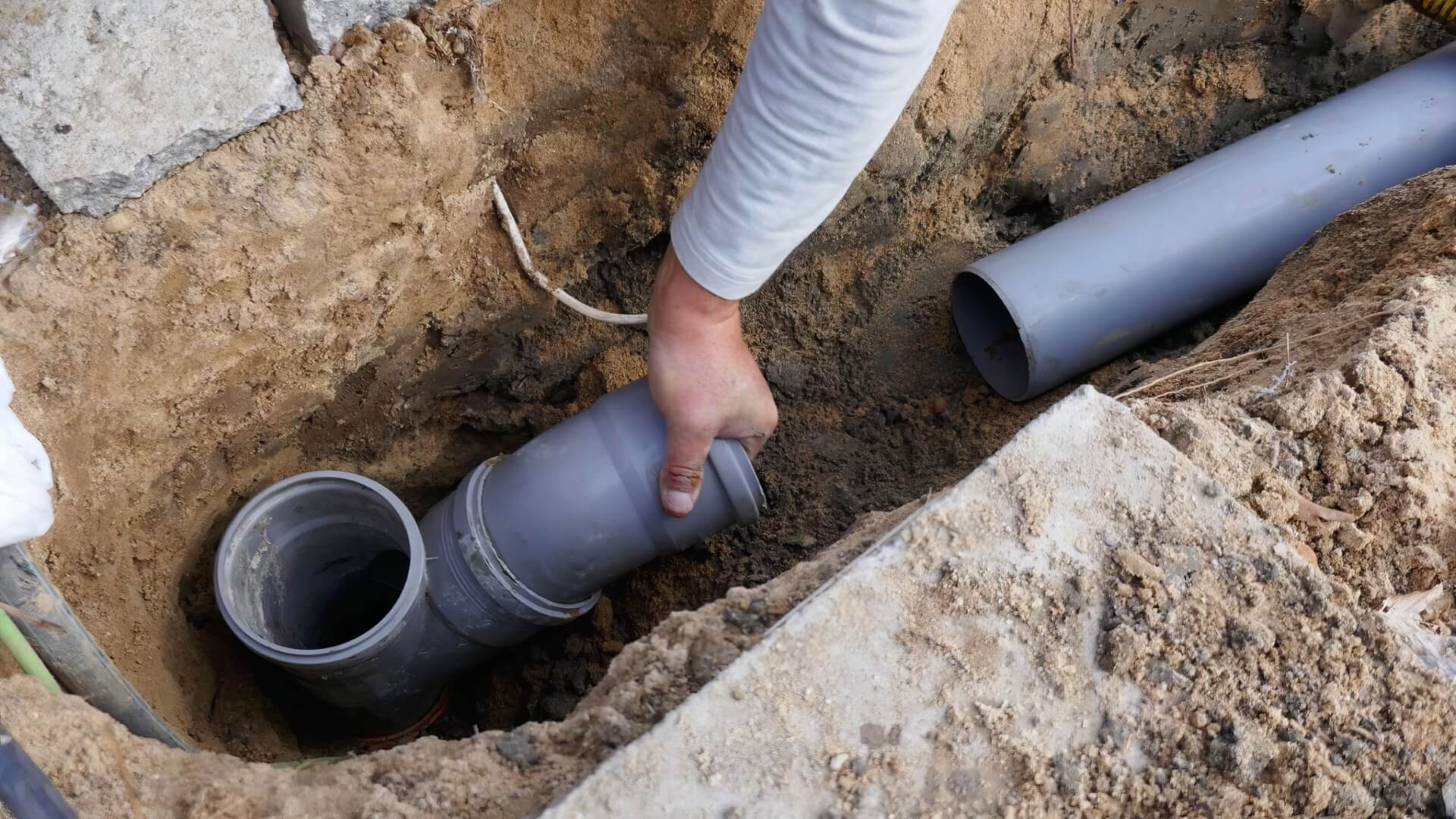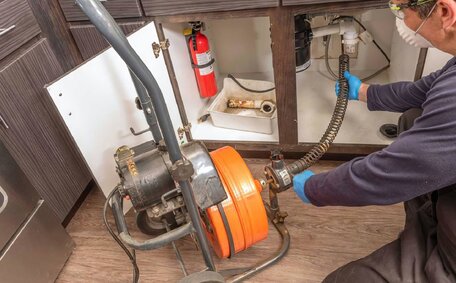Pipe lining, with its use of resin cement, is an innovative trenchless method for repairing damaged drainage and sewer pipes without the need for expensive and disruptive excavation. It involves a no dig approach, with a resin-impregnated liner being inserted into between resin cement and existing pipes to create a new pipe within the old one. Pre and post-relining inspections play a crucial role in ensuring long-lasting results.
In-depth pre and post-relining inspections detect problems like cracks, root intrusions, corrosion, and broken sections. Roots, often responsible for reduced flow and compromised integrity that may lead to leaks or failure, are identified and rectified during relining to ensure the best possible repair.
Post-relining inspections ensure the liner has bonded correctly and cured uniformly along the pipe’s length, confirming successful integration for efficient drainage. This allows any deficiencies to be promptly detected and remedied.
As leading plumbers providing trenchless pipe relining in Drummoyne, Sydney, At Drummoyne Plumbing, we would recognise the importance of comprehensive inspections. We use advanced drain cameras to comprehensively evaluate damage, ensuring repairs meet superior quality standards. Contact us today to find out about our interest free payment options and discover how to prolong your new pipes’ lifespan with our professional relining and inspection services.
Significance of Pre-Relining Inspections
Pre-relining inspections are a vital first step in any pipe repair and relining project for your home, particularly where damaged canals were problematic. Using CCTV cameras, plumbers conduct thorough inspections of sewer and stormwater systems, revealing interior damage, defects, and blockages, illustrating how relining saves time and resources.
Identifying cracks, disjointed pipes, vegetation intrusion, decay, and cave-ins is essential for expert rehabilitation of damaged sewer and stormwater systems. Addressing such plumbing issues is imperative to maintain efficient drainage, structural integrity, and prevent leaks, backups, or failures.
Accurately identifying the location and extent of damage allows plumbers to strategically reinforce and tailor the liner for enhanced structural strength in any pipe system. This showcases the effectiveness of customized relining solutions.
A precise pre-inspection aids in determining if 15mm thick slabs were suitable for the liner, regarding both thickness and length needed. Trying to line pipes without understanding the full scope of damage risks an incomplete or failed restoration.
Identifying the precise location of issues such as sagging pipes, improper gradients and obstructions helps resolve problems before they cause extensive damage. This guarantees that repaired pipes, much like how dental crowns were used in protecting treated teeth, stave off water damage in your residence and adhere to the peak standards for flow, efficiency, and durability.
In summary, Pre-relining inspections provide essential insights that inform the relining approach, especially for previously damaged areas. They help plumbers work smarter and boost the odds of a smooth, effective lining process that returns pipes to like-new condition.
Identifying Potential Issues
Pre-relining inspections can uncover a wide range of potential problems within drainage pipes and sewer lines, including compromised structural integrity where fiber posts are necessary. Inspectors look for issues such as:
- Cracks - Even negligible fissures affect structural soundness and permit root entry or leaks, observations obtained per root examination.
- Displaced joints - Gaps between pipe sections hinder flow and structural stability.
- Corrosion - Deterioration of the pipe wall from chemical exposure or age.
- Blocked drains - Accumulation of rubble, plant roots, fat or mineral deposits obstruct passage.
- Infiltration - Groundwater intruding into pipes via fissures or flared root joints.
- Bellies - Low sagging sections that trap solids and liquids.
- Tree roots - Situations where canals were besieged by roots, growing within pipes, obstructing flow.
Identifying the type and extent of damage through pre-relining inspection allows plumbers to select the optimal solution. Short, isolated issues may require patching or spot repairs on a damaged pipe. More significant issues may necessitate a full-scale relining, essentially creating new pipes within the existing network.
Inspectors also detect incorrect pipeline slopes and misaligned sections that obstruct stormwater drainage. This helps determine if adjustments are required when relining to optimise flow and performance. When it comes to pre-inspections, they grant plumbers crucial insights into what pipe relining can achieve, allowing the execution of precise repairs, particularly when comes to treating pipes post root canal intrusion.
Assessing Pipe Condition and Material
Pipe materials like cast iron, galvanised steel, concrete and clay all have different typical failure modes.
Cast iron is prone to cracking while galvanised steel is susceptible to corrosion. Concrete can crack and spall while clay pipes are vulnerable to roots and fractures. Understanding the pipe material and typical deterioration patterns helps plumbers to target weaknesses for relining.
Inspectors will check for material-specific issues like rust, scale buildup or extensive cracking. The extent of wear, misalignment and blockages is also assessed. This reveals how much of the pipes remaining functional lifespan has been depleted.
With knowledge of the current pipe state, plumbers choose the appropriate liner type and installation method. This tailored solution strengthens and rejuvenates each pipe material, compensating for its weaknesses.
In summary, identifying pipe materials and damage tendencies is crucial pre-relining preparation. This enables plumbers to devise pipe relining solutions that are ingeniously planned to maximise benefit from the procedure and prolong the service life of the pipe, effectively accomplishing the task.
Concrete can crack and spe extent of wear, misalignment and blockages is also assessed.
Pre-relining inspections are invaluable for preventing future plumbing issues by uncovering hidden problems. By meticulously evaluating pies can be prone to cracking or failure can be reinforced or replaced during relining. Problematic offsets or blockages get corrected to optimise drainage flow. Even minor cracks in zones where root canals intruded previously were covered up effectively, preventing larger breaches in the future.
Detailed building inspections, akin to those performed in the construction industry, offer crucial data for homeowners for informed plumbing-related decisions. If pipes are severely deteriorated, we would conclude that total replacement may be the best long-term option over relining. Or pipes with substantial life remaining may need only spot repairs.
Recognising a pipe’s precise condition allows us to carefully assess issues so we would recommend the most suitable pipe repairs and strategies, instead of just offering services. This prevents unnecessary work and can save homeowners money over the long run.
In summary, pre-relining inspections are a wise investment.
The modest initial investment yields insights invaluable beyond their cost, guiding intelligent solutions to a functioning point new in pipe maintenance. This approach, which was very reasonable in cost and ensured plumbing systems operate smoothly, also was very effective in extending their lifespan. Contact our team today to get your pipes inspected and prevent future drainage headaches.
Key Benefits of Post-Relining Inspections
Post-relining inspections deliver several key benefits that ensure optimal repairs and continued performance. A key goal is to confirm that ideal adhesion results were obtained per root section for the wholly cured liner.
Inspectors confirm the integrity of the resin pushout bond in fiber post relining, seeking out bubbles or uneven curing signs. We ensure a solid pushout bond strength has taken hold between the resin and liner, including the resin cement dentin, forestalling any future issues like leaks or detachment.
Post-inspections ensure that relined sections, including resin cement root areas, have regained full strength and flow capacity. Any lingering blockages, where posts were misaligned or inclines inappropriate, are identified for rectification.
The inspections, akin to a pushout test for adhesion strength, provide quality assurance and peace of mind, answering the question of how long does pipe relining last. Pipe interiors are re-evaluated in case repairs are needed before drainage systems are restored to use.
To ensure longevity, it’s recommended that post-relining inspections are done within 24 hours after installation while the liner is still pliable. This approach enables swift repairs to be executed before the cement layer within the liner completely solidifies.
Overall, post-relining inspections help ensure repairs withstand the test of time. They add an extra layer of protection to confirm relined pipes will continue performing at optimum levels for decades to come.
Verifying Liner Condition
Post-relining inspections play a vital role in verifying the overall condition of the installed liner. CCTV cameras are used to carefully examine the full length of the relined pipe and check for any defects that may have arisen.
Inspectors look for potential issues like loose fit, inadequate adhesion, bulges, dents, folds, or uneven curing in pipes under surfaces that indicate problems with the liner installation. Protruding laterals are also checked to ensure proper reinstatement.
It is essential that the liner has cured smoothly and formed a tight seal throughout contact areas with the existing pipe. Gaps, delamination, or bulges can undermine structural integrity and durability.
Verifying proper sloping and flow capacity is also important to confirm the relined pipe can efficiently handle drainage demands. The inspection validates that the liner repair has been completely successful in restoring the pipe’s function.
Post-relining inspections provide quality assurance and peace of mind that the relining process achieved a durable, long-lasting restoration. Any deficiencies can be addressed quickly before pipes are put back into service.
Checking for Installation Defects
Post-relining inspections are critical for checking the installed liner for any defects that may have occurred during the installation process. Trained professionals use CCTV cameras to thoroughly examine the liner’s fit, adhesion, and curing throughout the entire length of the relined pipe.
Potential liner defects to look for include:
- Gaps between liner and host pipe indicating poor adhesion
- Excessive wrinkling or folded sections
- Bulges or dents that alter the diameter
- Tears, holes, or dry spots from insufficient composite resin saturation
- Detached or delaminated sections
- Blockages from debris left behind
Identifying any deficiencies before the liner hardens is critical, ensuring that post-relining repairs secure optimal bonding, strength, and flow capacity for long-term performance.
Ensuring Quality Standards
Post-relining inspections are essential for ensuring repairs meet industry best practises and quality standards. At Drummoyne Plumbing, we adhere to stringent procedures to guarantee our relining work meets the highest benchmarks of excellence.
Our skilled technicians perform comprehensive CCTV inspections, ensuring the pipes are clear post-installation and leaving no mess behind. They verify the liner’s smooth cure, tight seal, proper slope, flow capacity, and lateral reinstatements to ensure top-quality results.
By detecting any subtle installation flaws, we find out exactly what corrections to make promptly before the service has concluded, ensuring all aspects are perfected before clients start thinking about using their pipes again. This commitment to quality gives our customers confidence that relined pipes will deliver maximum performance and longevity, ready for them to use them again.
Our post-inspections, with a great job enhanced by detailed camera inspection, add an extra layer of diligence that reflects our mission to provide reliable trenchless solutions. We stand behind all work and will promptly address any deficiencies that arise. Contact us today to learn more about our dedication to the highest relining quality standards.
Inspection Techniques and Procedures
Sonar imaging can also detect voids behind pipes by emitting sound waves. Acoustic methods like tapping along the pipe help pinpoint breaches or delamination. Smoke testing locates breaks by releasing non-toxic smoke into pipes and observing where it escapes.
Dye testing can identify cracks and leaks by flooding pipes with dyed water and checking for discolouration in surrounding soil. Electromagnetic techniques detect pipe wall deterioration by measuring magnetic field disturbances.
For post-relining inspections, cameras examine the liner for proper fit, adhesion, curing and reinstatements. Pressure testing confirms robustness, while laser profiling with test preset alpha levels ensures diameter consistency at a crosshead speed of 0.5 mm/min, certifying the post space is accurately measured.
These advanced methods allow for superior inspection accuracy, ensuring we got the job done efficiently, which quells homeowner concerns like how long pipe inspection takes. At Drummoyne Plumbing, we use the latest technology and employ meticulous procedures to ensure optimal repairs tailored to your drainage system’s unique needs.
Sonar imaging can also detect voids behind pipes by emitting sound waves.
CCTV drain inspection is crucial, enabling detailed visual checks of underground pipes and sewer lines, offering plumbers key insights intras equip inspectors to identify any cracks, leaks, blockages, breaks or collapse in pipes with precision.
Thorough CCTV pipe inspections are instrumental for precisely charting the extent of damage, especially facing a blocked sewer, prior to relining. This et the pipeline. CCTV technology is highly recommended as it allows plumbers to stand behind repairs knowing that quality standards have been met.
At Drummoyne Plumbing, by using cctv state-of-the-art inspection technology, your local plumber conducts pre and post-relining inspections for residential and commercial customers alike in Drummoyne, Sydney. Contact us to schedule comprehensive CCTV analysis of your drainage system today.
Alongside technology like CCTV, trained plumbers conduct visual and physical inspections, examining the pipe’s entire length for obvious defects and feeling for irregularities to complement the camera’s findings for complete assessment.
Visual inspections involve carefully looking over the entire length of exposed pipes for any apparent leaks, cracks, corrosion, blockages or other defects. Plumbers will check connection points between pipe segments for proper alignment and sealing.
At Drummoyne Plumbing, we take great care in inspecting drainage systems from top to bottom using the latest technology paired with extensive hands-on expertise. Contact us today to learn more or schedule pre and post-relining inspections.
Visual and Physical Examinations
Alongside technology like CCTV, trained plumbers conduct visual and physical inspections, examining the pipe’s entire length for obvious defects and feeling for irregularities to complement the camera’s findings for complete assessment.
Compliance and Quality Assurance
Pre and post-relining inspections are essential, not just for assessing compliance with industry codes and standards, but they also ensure quality assurance measures came out on top.
During pre-inspection, we would ascertain that the existing pipeline adheres to legal requirements for materials, diameter, slope and structural integrity. Identifying any deficiencies that violate plumbing codes is what you need know to ensure proper corrections will be made during relining.
Post-inspection verifies that the relined pipe complies with all relevant standards ensuring and industry best practices when conducting pipe relining projects for both residential and new home clients in Drummoyne, Sydney. Our exhaustive inspections, which ascertain the longevity of pipe relining, offer quality assurance and we would hi learn more!
Meeting Industry Standards
Drummoyne Plumbing ensures that pre and post-relining inspections consistently meet stringent industry standards, thereby maintaining excellent quality and reliability in our services.
Our comprehensive inspections evaluate everything from materials and diameter to integrity and slope, ensuring all plumbing issues are properly addressed and repairs meet industry benchmarks.
We meticulously check liners post-relining for adhesion, curing, and sealing along the pipeline, offering accountability and assurance of the highest quality standards.
Providing Client Reassurance
Pre and post-relining inspections ensure diligent examination of pipes, affording clients peace of mind and confidence in the quality and longevity of the repairs.
Comprehensive inspections allow companies like Drummoyne Plumbing to proactively identify issues early and execute solutions to rigorous industry standards. Homeowners and businesses can rely on our expertise to restore their drainage systems to optimal condition.
I would highly recommend them for our detailed pre and post-relining analysis as it provides full transparency into the scope of damage and repair procedures. We keep clients informed each step of the way. This level of diligence gives them comfort that problems have been diagnosed and addressed effectively.
Our adherence to strict protocols and quality control measures exceeds customer expectations, highlighting how our thorough and cost-effective service ensures dependable plumbing performance for the future.






